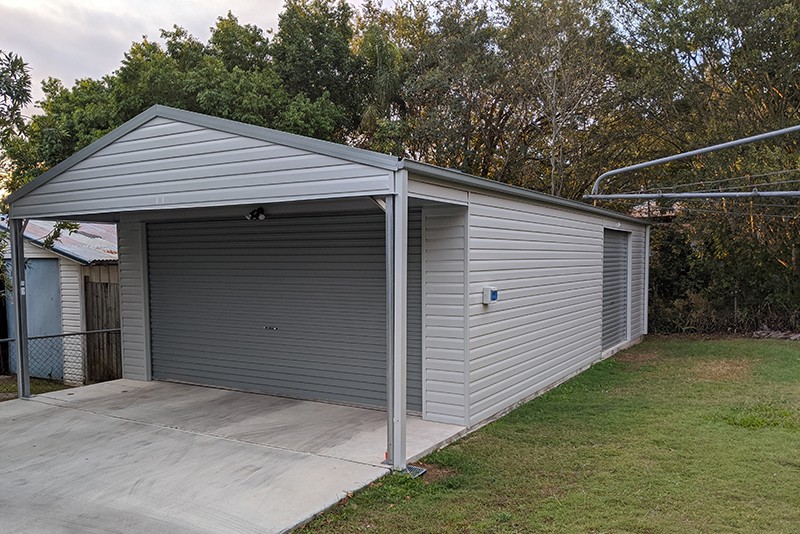Latest Posts
Stay Dry Waterproofing Your Shed

Stay Dry| Waterproofing Your Shed
It’s been a wet year!
La Nīna has given us a pretty solid soaking in 2021 and many people are seeing the negative effects on this constant rainfall creeping into properties and sheds.
We manufacture using high-quality materials for a professional, durable finish every time, but even the best garages and sheds in the world are only as good as their construction and maintenance.
By addressing potential water issues before they happen and keeping an eye on your property’s upkeep can help you avoid costly damage in the long run, so read on and protect your garage or shed against La Nīna’s watery temper-tantrums!
Waterproofing Roofing
Where better to start than at the top? Your roof takes the brunt of the wet weather and is the most important part to maintain.
We’ll assume that you’re using a good-quality roof sheeting with ridged overlap to prevent water from seeping in. This needs to be properly attached to begin with. are specifically designed for the job but will require to make them properly watertight.
The sheeting itself may also need maintenance from time to time. Chipped paint, rust and damage can escalate quickly, so every six months grab a ladder and check your roofing for any signs of damage. will be enough to patch up most minor abrasions, but if any corrosion is occurring, be sure to before too much damage can be done.
Also, make sure that any ridges in the roofing are properly covered by quality . Titan actually scribe the ridge cap into the particular roof profile for even better water proofing.
Drainage
Drainage is an important way to protect your roof, walls and surrounding area. Improper drainage can lead to roof collapse from excess weight, seepage through walls and openings, damaged paving and lawns, and excess sitting water surrounding your garage.
Adding can manage water distribution, channelling it away from your roof and safely into a water tank or soak-away area.
Every month or so, check your gutters are clear. This will obviously help water flow better but also remove excess weight, which could collapse your gutters. Leaf litter can also encourage pests and is a fire risk, so keeping them clean is good on numerous levels.
Check the pitch of your gutters to make sure they haven’t dropped. Pour a bottle of water into the end furthest from the downpipe to make sure it’s flowing well.
Regardless of where you want the water to go, check your downpipe from time to time. Joins can become detached, leading to leaks, so get someone to watch your downpipe as you do your water bottle pitch test. You can direct your runoff into a water barrel for use at drier times or run horizontal piping to an area where the water can harmlessly soak away.
Last Line of Defence
prevent water from seeping back onto your building, so check they are fitted tightly. Look at the wall beneath the flashings for signs of water damage or wear. If you find any marks, trace them to find the leak area and apply some silicone gel, refit or replace your flashing.
Lastly, check your seals. Whether they are over the top of doors or windows, around the frames or at the foot of garage or personal access doors, make sure they don’t have any holes or tears. Even a small breach can lead to expensive water damage.
After the Flood
Sitting water can lead to all sorts of problems. Soon after a deluge, check all around your property for areas of sitting water. Inspect your property for damage and then assess the best way to remove the water. You may need to add additional guttering, buy a small water tank or dig a drainage ditch filled with a loose aggregate to quickly and efficiently drain water safely away from your garage or shed.
It sounds like a lot, but a ten-minute inspection every few months will help to avoid the majority of expensive damage and further steps won’t be needed to repair or replace garage parts or water-damaged possessions.
If in doubt, contact your professional Titan Lite team member today.
